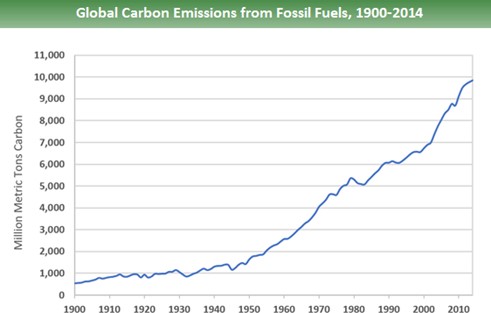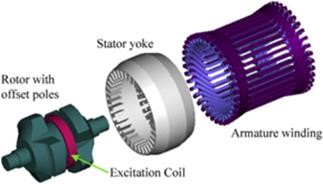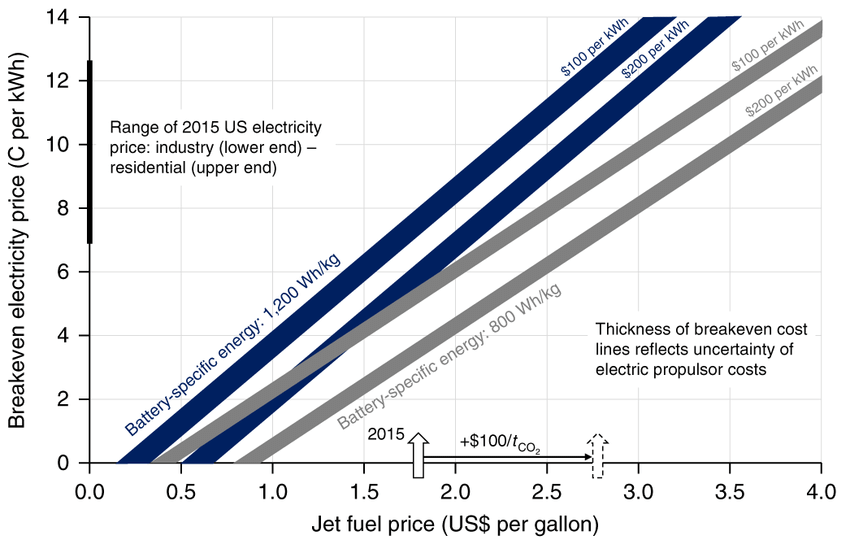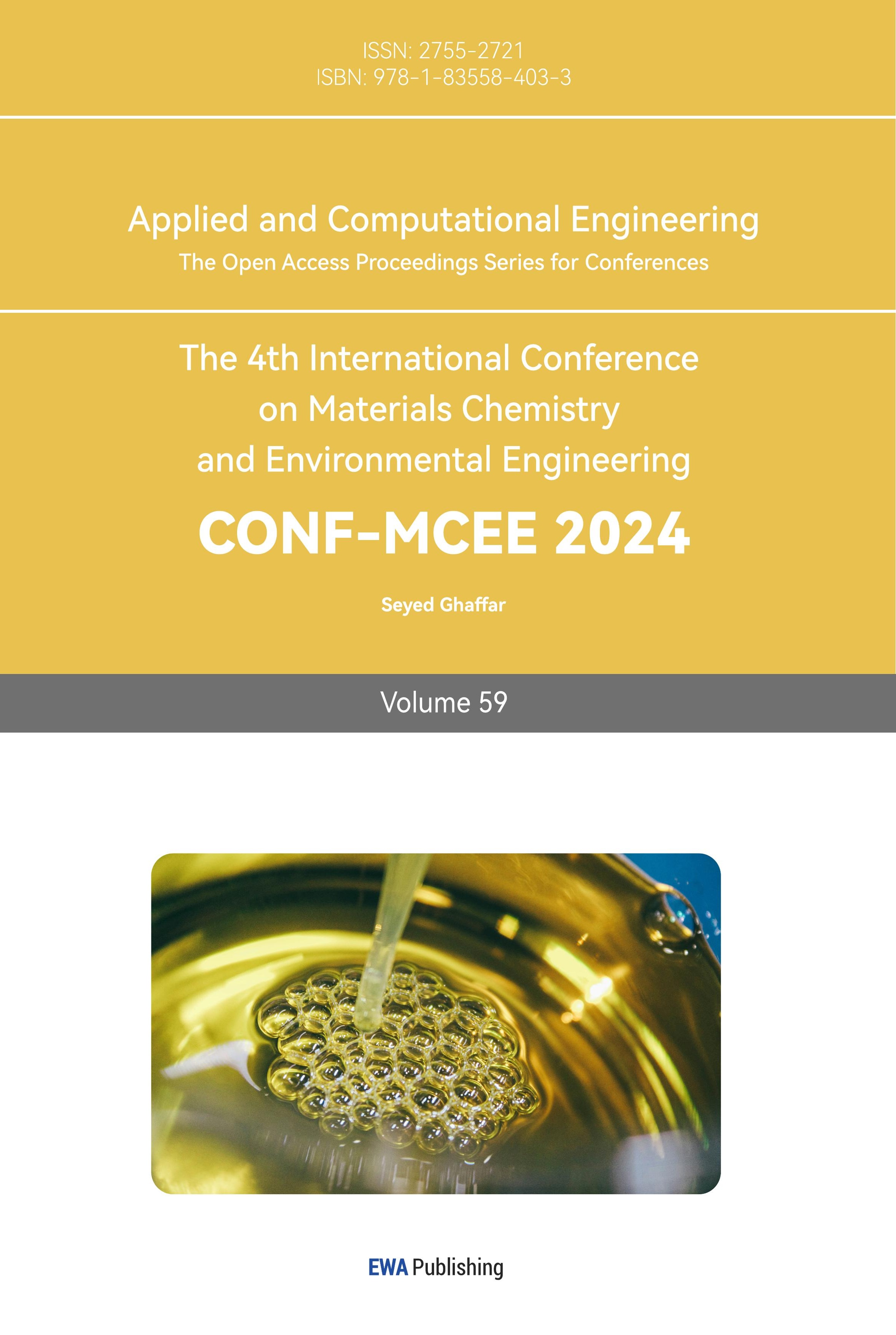1. Introduction
The 21st century has witnessed a swift advancement in cutting-edge technology and industrial expansion. This brisk growth in the industrial sector, to some extent, is advantageous to people globally, yielding economic and social benefits, especially in lower-income nations. Indeed, this phase has marked a time of remarkable achievements in the sphere of global development over a relatively short period. However, this progress comes with its own set of repercussions. The rapid pace of industrialization, coupled with the unsustainable exploitation of natural resources, has brought about significant changes in environmental conditions.

Figure 1. The increase in global carbon emission from 1900 to 2014 [1]
As per the data provided by the Environmental Protection Authority (EPA) (Figure 1), there has been a substantial rise in CO2 emissions, a primary greenhouse gas, since 1900. Particularly since 1970, the emissions of CO2 have escalated by almost 90%, largely due to the burning of fossil fuels and industrial activities. Concurrently, the transportation sector has been a significant contributor to total greenhouse gas emissions, representing about 15% since 2010 [2]. It is worth mentioning that a large portion of global transportation relies heavily on petroleum-based fuels such as gasoline and diesel.
In addition to the potential environmental damage, the traditional ways of generating power also have many drawbacks. One example is the internal combustion engine, which converts energy into power but has a relatively low efficiency of around 40%. As a result, there is ongoing research and development aimed at discovering alternative methods to replace it. From an economic perspective, the usage of fossil fuels is also expected to be more expensive in the long term and result in a lower profit margin. The cheap, clean and high-efficiency energy — electricity seems to be the perfect substitute for fossil fuel. Thus, there is a global trend towards a more reliable and ecological alternative, which will ultimately promote the electrification of transportation. Today, the number of electric cars in the market constantly rises with unforeseen speed and will grow more rapidly in the future. Between 2020 and 2022, the proportion of electric vehicles in the overall car market increased by over threefold, going from 4% to 14% [3]. As the automotive industry experienced significant success, people have also begun focusing on other modes of transportation, such as aviation, with hopes of replicating the automotive industry’s achievements. However, emulating the automotive industry’s success is not straightforward, as aviation involves more complex considerations, including propulsion, weight, and emergency protocols. Furthermore, due to the relatively underdeveloped technology, electric airplanes do not possess a clear cut advantage over their drawbacks.
Herein, the paper presents a comprehensive analysis of electric aviation, addressing key aspects, including energy density, battery technology, electric motor design, safety considerations, and economic implications. The paper aims to provide a thorough analysis of advancements, challenges, and opportunities in the field, offering valuable insights into the current state of electric aviation.
2. Batteries System Design of Electric Aircraft
Energy density is one of the biggest obstacles to electric aviation. The comparison between lithium-ion batteries and jet fuel highlights a substantial disparity in energy density. Specifically, lithium-ion batteries have an energy density of around 300 Wh/kg, whereas Jet Fuel’s energy density is approximately 11.95 kWh/kg [4]. This disparity underscores a fundamental challenge when transitioning from traditional jet fuel to batteries as a power source for aircraft. To match the energy output of jet fuel, a significantly larger quantity of batteries is necessitated, approximately 50 times more by weight. Consequently, this substantial increase in the mass of batteries translates into a notable augmentation in the overall mass of the aircraft, primarily due to the added weight of the power source (Table 1).
Table 1. Comparison of the Jet Fuel and Li-ion Battery.
Energy density (Wh/kg) | Global efficiency | Shaft power (W/kg) | |
Jet fuel | 11,950 | ~0.61 | 7290 |
Li-ion Battery | 300 | ~0.99 | 297 |
However, recent studies have advanced in battery technology. Numerous research studies indicate that nanotechnology holds promise for enhancing the energy density of batteries. The current most powerful battery, the Silicon Nanowire Anode Li-ion Cells, is about 500 Wh/kg and twice higher than the normal Lithium-ion battery [5]. Although the energy density still has a large gap compared to jet fuel, it also attracts scientists to focus on nanotechnology’s potential and ability, which could be applied in battery technology. Lithium-air batteries which considered to be one of the superior types of battery due to the high specific energy density and the ability to fulfil a reverse cycle. Research has shown that 1 kg of lithium metal oxidizes to yield 11,680 Wh/kg in the charged state. The energy density produced by the discharge reaction is 3460 Wh/kg [6]. However, it also has some flaws, such as instability, low electrical efficiency, specific power, and discharge rates.
Electric aircraft face a conundrum wherein they require more power for takeoff, necessitating additional batteries to meet this demand. This situation has led researchers into a cyclic challenge centered around battery-related issues. Consequently, in pursuit of the goal of electric flight, compromises must be made in areas such as passenger capacity and range. Due to their considerable weight, current electric aircraft can only accommodate a limited number of passengers. Similarly, the range of electric airplanes encounters a similar constraint due to their lower energy density. For instance, the IFB-Stuttgart EGenius, set a record by achieving a maximum single-trip distance of 400 km on a single charge [7]. However, when compared to traditional conventional aircraft, electric counterparts lag significantly behind in this aspect (Table 2).
Table 2. Comparison between CESSNA 172 SKYHAWK and IFB-Stuttgart E-Genius.
Specifications | Cessna 172 Skyhawk (Conventional Aircraft) | IFB-Stuttgart E-Genius (Electric Airplane) |
Crew | 1 member | 2 members |
Length | 8.28 m | 8.1 m |
Wingspan | 11.00 m | 16.9m |
Takeoff Distance | 497 m | ~450 m |
Landing Distance | 407 m | 460 m |
Empty Weight | 767 kg | 760 kg |
Range | 1,289 km | 400 km |
Cruise Speed | 226 km/h | 270 km/h |
3. Motor Technology of Electric Aircraft
Electric aviation has a history dating back to 1973 [8]. Although the concept electric airplane is not popular, the electric motor also serves as the Emergency Power Unit (EPU), which is an emergency power generator driven by the electric motor. All-electric aircraft can only be powered by an electric motor, which converts the energy of the magnetic and electric fields into mechanical energy [9]. Weight-sensitive applications are not suited for conventional electric motor technologies. And those motors also have the specific power of about 1~5 kw/h due to the heat generation, which is much lower than that of gas turbines [10,11]. For these reasons, current research on high-powered electric motors focuses on using high-temperature superconducting materials (HTS) (Figure 2). HTS motor designs use the permanent magnet as its rotor material, such as NdFeB. In order to ensure that the electromagnetic fields of the rotor poles and the stator windings maintain a constant interaction, scientists use an active power control and management unit (PMAD) to control the current in the stator windings [12]. Another crucial aspect of electric motors is superconductivity, a phenomenon observed in specific materials under extreme conditions, ranging from -192°C to -246°C. Under these conditions, these materials exhibit zero ohmic resistance, resulting in enhanced electric field capabilities and intensities within electric motors. Superconductors have the capacity to carry substantial current densities without any resistive losses. This property enables the development of lightweight, high-specific-power electric aircraft by using high-temperature superconductive coils in place of either the rotor or stator windings [11].

Figure 2. Structure of a HTS motor [13]
Despite the fact that HTS materials seem to be the direction that electric motor research is headed towards, this perception may soon alter as a result of optimization and advancements in PMSM design. In March 2021, electric motor manufacturer H3X launched the 250 kW HPDM-250 motor, which consists of a permanent magnet stator and a copper winding rotor (Figure 3). It is only 15 kg in weight and produces 13 kW/kg of continuous power [7]. Similarly, another electric motor manufacturer, Magnix, has invented one of the most powerful electric motors, magnix650, which can generate up to 650kW. The first all-electric passenger airplane, which had successfully taken to the sky, equipped their product Magna 250, generating up to 280 kW [14]. Further, on June 8th, the MIT Gas Turbine Laboratory (GTL) introduced their immensely powerful electric motor, with a peak power of up to 1 megawatt. It consists of a high-speed rotor with an array of magnets arranged in different polarity directions; a compact, low-loss stator mounted inside the rotor containing a complex array of copper windings and other components [15]. These developments illustrate that there are multiple ways to approach the optimal utility of the electric motor. And they also imply that commercial adoption of electric aircraft may be coming sooner than expected.

Figure 3. Illustration of an electric motor in an all-electric airplane [10]
4. Safety Considerations and Economic Analysis
The substantial electrical power requirements of electric aircraft necessitate extensive research and optimization efforts, with a primary emphasis on enhancing component reliability. Electric aircraft feature numerous components that differ significantly from their traditional counterparts, raising substantial safety concerns. Key components, like electronic switches and microelectronics within power electronic converters, must demonstrate reliability throughout their extended service life under harsh environmental conditions, which often spans approximately 100000 hours [16]. Moreover, owing to the unique operational systems and logic inherent to all-electric aircraft, engineers must devise an additional emergency system to address potential safety hazards. For instance, the prevalent use of Lithium-ion batteries in current electric airplanes poses a risk of thermal runaway, potentially resulting in explosions or fires. The design of electric aircraft must also account for potential failures in the electrical system and issues related to batteries.
SiC semiconductors, extensively utilized in electric aircraft for power electronics and battery management, currently exhibit an issue with unreliable gate oxide. The higher error rates are attributed to the elevated field strength at the gate oxide, leading to two types of failures: intrinsic and extrinsic. In the case of intrinsic failures, there exists an inherent weakness in the gate oxide structure of the semiconductor, and research has demonstrated that SiC oxide is less dependable than its Si counterpart. Extrinsic errors can also result from localized high electric field strengths, but studies have shown that using substrates with fewer defects can enhance reliability [17,18]. It is worth noting that SiC technology is relatively new, with about 16 years of development compared to Si, which has had approximately 70 years of development. This suggests that as more experience is gained in the field, researchers may explore new methods to address the instability and unreliability of SiC oxide [19].
The transition to electric aircraft poses significant challenges related to infrastructure, operational efficiency, and cost. As an estimate, assuming a constant power demand of 2.5 MW throughout the flight, with a total flight duration of 2 hours, which necessitates 5 MWh of energy (excluding efficiency losses), the aircraft needs to be ready for flight again within 30 minutes with a specific State of Charge (SoC). This necessitates a charging capacity of 10 MW. Additionally, suppose five small all-electric aircraft are concurrently serviced. In that case, this implies that the airport would require an electrical infrastructure capable of delivering 50 MW of power, a significant demand that surpasses the typical power input of 45 MW for large airports worldwide. This extended downtime due to servicing large fleets and limited passenger capacity presents challenges that are unattractive to airlines [20]. Additionally, the profit of the airport will be cut due to the low efficiency of charging and the massive electricity required. The popularity of charging facilities in most airports will also cost a large budget for both the airport and the government. Governments are reluctant to build related facilities, especially since the technology of electric airplanes is still at a relatively new and immature stage. Additionally, to reach a reasonable level, electric aircraft could need to invest more in future generations of possibly pricey batteries. Due to the higher weight of the electric airplanes, their maintenance costs on the landing gear components may be higher than the average. However, the promotion of electric aircraft could yield substantial cost benefits that may outweigh their initial expenses. For example, electric planes eliminate the need for a fuel system, auxiliary power unit (APU), and other components found in conventional aircraft. Furthermore, the relatively simple mechanical structure of electric motors could potentially lead to reduced maintenance costs, although exceptions may arise, such as with the cooling system for superconducting motors in electric aircraft [19]. Just compare the biggest cost disparities between all-electric and gas-turbine aircraft. According to the end-use industry, breakeven power costs in 2015 ranged from 6.9 to 12.7 cents per kWh in the United States and were $1.80 per gallon for jet fuel [20]. Research shows that an all-electric aircraft with a battery pack with a specific energy of 800 Wh kg-1 and a range of 741 km would only be economically viable if the battery price was 100 kWh-1 or less (Figure 4).
Nevertheless, government policies may involve substantial decreases in electricity costs and hikes in fossil fuel prices, such as the carbon tax. And as long as the electricity is produced by renewable energy such as wind or water, the breakeven electricity price will eventually increase. It also suggests that government policies supporting electricity with low-carbon production or taxes on carbon production may be a prerequisite for the introduction of all-electric aircraft before the technology is feasible and mature [19].

Figure 4. The breakeven electricity price compared to the US jet fuel price in 2015 [21]
5. Conclusion
In the context of advancing global electrification efforts, the emergence of all-electric aircraft signifies a significant step forward in modern transportation, demonstrating that the aspiration of achieving zero carbon emissions is no longer an unattainable dream. However, there remain numerous technical challenges hindering the progress of electric aviation, particularly pertaining to battery and motor technologies. The transition from conventional transportation to electric alternatives is expected to be a protracted and financially demanding endeavor. As a transitional measure, people are increasingly adopting hybrid power generation for electric aircraft, representing a more gradual and highly effective reform approach. This intermediate approach places less stringent demands on battery pack energy density and does not necessitate superconducting technology in electric motors. While these transitional technologies may not yield substantial reductions in greenhouse gas emissions, they serve as critical catalysts and technological benchmarks for the eventual realization of all-electric aircraft systems. With the accumulation of experience in electric aviation and advancements in electric technology, the advent of commercial all-electric aircraft may materialize sooner than anticipated.
References
[1]. Boden T A, Marland G, Andres R J. Global, regional, and national fossil-fuel CO2 emissions. Carbon dioxide information analysis center, Oak ridge national laboratory, US department of energy, Oak Ridge, Tenn., USA doi, 2009, 10.
[2]. Global Greenhouse Gas Emissions Data | US EPA. Global Greenhouse Gas Emissions Data, www.epa.gov/ghgemissions/global-greenhouse-gas-emissions-data. Accessed 16 Sept. 2023.
[3]. IEA. Electric Vehicles. www.iea.org/energy-system/transport/electric-vehicles. Accessed 16 Sept. 2023.
[4]. Benegas Jayme, Diego, Evaluation of the Hybrid-Electric Aircraft Project Airbus E-Fan X Master Thesis. Hamburg: Aircraft Design and Systems Group (AERO), Department of Automotive and Aeronautical Engineering, Hamburg University of Applied Sciences, 2019
[5]. Amprius. The All-New Amprius 500 Wh/Kg Battery Platform Is Here. March 23, 2023. https://amprius.com/the-all-new-amprius-500-wh-kg-battery-platform-is-here/ Accessed 16 Sept. 2023.
[6]. Imanishi N, Yamamoto O. 2014 Materials today, 17 24
[7]. Thapa N, Ram S, Kumar S, et al. 2021 Materials Today: Proceedings, 43 175
[8]. Jackson P, Munson K, Peacock L. 2014 Jane’s all the world’s aircraft.
[9]. Vratny P C, Kuhn H, Hornung M. 2017 CEAS Aeronautical Journal, 8 31
[10]. Adu-Gyamfi B A, Good C. 2022 Transportation Engineering, 2022 100134.
[11]. Luongo C A, Masson P J, Nam T, et al. 2009 IEEE Transactions on applied superconductivity, 19 1055
[12]. Hoelzen J, Liu Y, Bensmann B, et al. 2018 Energies, 11 217.
[13]. Sivasubramaniam K, Zhang T, Lokhandwalla M, et al. 2009 IEEE Transactions on applied superconductivity, 19 1656
[14]. MagniX. MaginX Is Leading the Electrification of Aviation Retrieved from: www.magnix.aero/. Accessed 16 Sept. 2023.
[15]. Qasim M M, Otten D M, Spakovszky Z S, et al. 2023 Forum. AIAA Aviation 2023: 4161.
[16]. Andersen H, Chen Y, Qasim M M, et al. 2023 Forum. AIAA Aviation 2023: 4158. c1.
[17]. Chen Y, Spakovszky Z S, Greitzer E M, et al. 2023 Forum. AIAA Aviation 2023: 4160.
[18]. Wang H, Liserre M, Blaabjerg F, et al. 2013 IEEE Journal of Emerging and Selected Topics in Power Electronics, 2 97
[19]. Siemieniec R, Peters D, Esteve R, et al. 2017 19th European Conference on Power Electronics and Applications (EPE’17 ECCE Europe). IEEE, 2017 1
[20]. Cheung K P. 2018 IEEE International Reliability Physics Symposium (IRPS). IEEE, 2018: 2B. 3-1-2B. 3-5.
[21]. Schäfer A W, Barrett S R H, Doyme K, et al. 2019 Nature Energy, 4 160
Cite this article
Chen,A.Y. (2024). Analysis on technical challenges and prospects of electric aircraft. Applied and Computational Engineering,59,253-259.
Data availability
The datasets used and/or analyzed during the current study will be available from the authors upon reasonable request.
Disclaimer/Publisher's Note
The statements, opinions and data contained in all publications are solely those of the individual author(s) and contributor(s) and not of EWA Publishing and/or the editor(s). EWA Publishing and/or the editor(s) disclaim responsibility for any injury to people or property resulting from any ideas, methods, instructions or products referred to in the content.
About volume
Volume title: Proceedings of the 4th International Conference on Materials Chemistry and Environmental Engineering
© 2024 by the author(s). Licensee EWA Publishing, Oxford, UK. This article is an open access article distributed under the terms and
conditions of the Creative Commons Attribution (CC BY) license. Authors who
publish this series agree to the following terms:
1. Authors retain copyright and grant the series right of first publication with the work simultaneously licensed under a Creative Commons
Attribution License that allows others to share the work with an acknowledgment of the work's authorship and initial publication in this
series.
2. Authors are able to enter into separate, additional contractual arrangements for the non-exclusive distribution of the series's published
version of the work (e.g., post it to an institutional repository or publish it in a book), with an acknowledgment of its initial
publication in this series.
3. Authors are permitted and encouraged to post their work online (e.g., in institutional repositories or on their website) prior to and
during the submission process, as it can lead to productive exchanges, as well as earlier and greater citation of published work (See
Open access policy for details).
References
[1]. Boden T A, Marland G, Andres R J. Global, regional, and national fossil-fuel CO2 emissions. Carbon dioxide information analysis center, Oak ridge national laboratory, US department of energy, Oak Ridge, Tenn., USA doi, 2009, 10.
[2]. Global Greenhouse Gas Emissions Data | US EPA. Global Greenhouse Gas Emissions Data, www.epa.gov/ghgemissions/global-greenhouse-gas-emissions-data. Accessed 16 Sept. 2023.
[3]. IEA. Electric Vehicles. www.iea.org/energy-system/transport/electric-vehicles. Accessed 16 Sept. 2023.
[4]. Benegas Jayme, Diego, Evaluation of the Hybrid-Electric Aircraft Project Airbus E-Fan X Master Thesis. Hamburg: Aircraft Design and Systems Group (AERO), Department of Automotive and Aeronautical Engineering, Hamburg University of Applied Sciences, 2019
[5]. Amprius. The All-New Amprius 500 Wh/Kg Battery Platform Is Here. March 23, 2023. https://amprius.com/the-all-new-amprius-500-wh-kg-battery-platform-is-here/ Accessed 16 Sept. 2023.
[6]. Imanishi N, Yamamoto O. 2014 Materials today, 17 24
[7]. Thapa N, Ram S, Kumar S, et al. 2021 Materials Today: Proceedings, 43 175
[8]. Jackson P, Munson K, Peacock L. 2014 Jane’s all the world’s aircraft.
[9]. Vratny P C, Kuhn H, Hornung M. 2017 CEAS Aeronautical Journal, 8 31
[10]. Adu-Gyamfi B A, Good C. 2022 Transportation Engineering, 2022 100134.
[11]. Luongo C A, Masson P J, Nam T, et al. 2009 IEEE Transactions on applied superconductivity, 19 1055
[12]. Hoelzen J, Liu Y, Bensmann B, et al. 2018 Energies, 11 217.
[13]. Sivasubramaniam K, Zhang T, Lokhandwalla M, et al. 2009 IEEE Transactions on applied superconductivity, 19 1656
[14]. MagniX. MaginX Is Leading the Electrification of Aviation Retrieved from: www.magnix.aero/. Accessed 16 Sept. 2023.
[15]. Qasim M M, Otten D M, Spakovszky Z S, et al. 2023 Forum. AIAA Aviation 2023: 4161.
[16]. Andersen H, Chen Y, Qasim M M, et al. 2023 Forum. AIAA Aviation 2023: 4158. c1.
[17]. Chen Y, Spakovszky Z S, Greitzer E M, et al. 2023 Forum. AIAA Aviation 2023: 4160.
[18]. Wang H, Liserre M, Blaabjerg F, et al. 2013 IEEE Journal of Emerging and Selected Topics in Power Electronics, 2 97
[19]. Siemieniec R, Peters D, Esteve R, et al. 2017 19th European Conference on Power Electronics and Applications (EPE’17 ECCE Europe). IEEE, 2017 1
[20]. Cheung K P. 2018 IEEE International Reliability Physics Symposium (IRPS). IEEE, 2018: 2B. 3-1-2B. 3-5.
[21]. Schäfer A W, Barrett S R H, Doyme K, et al. 2019 Nature Energy, 4 160









